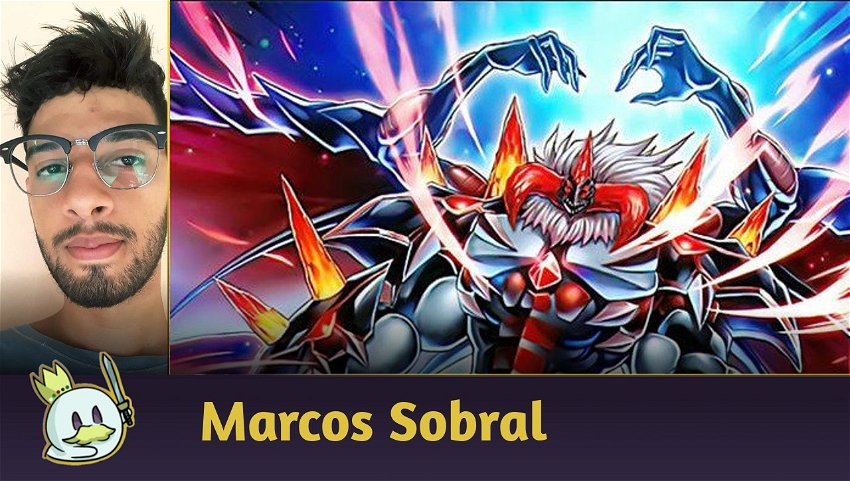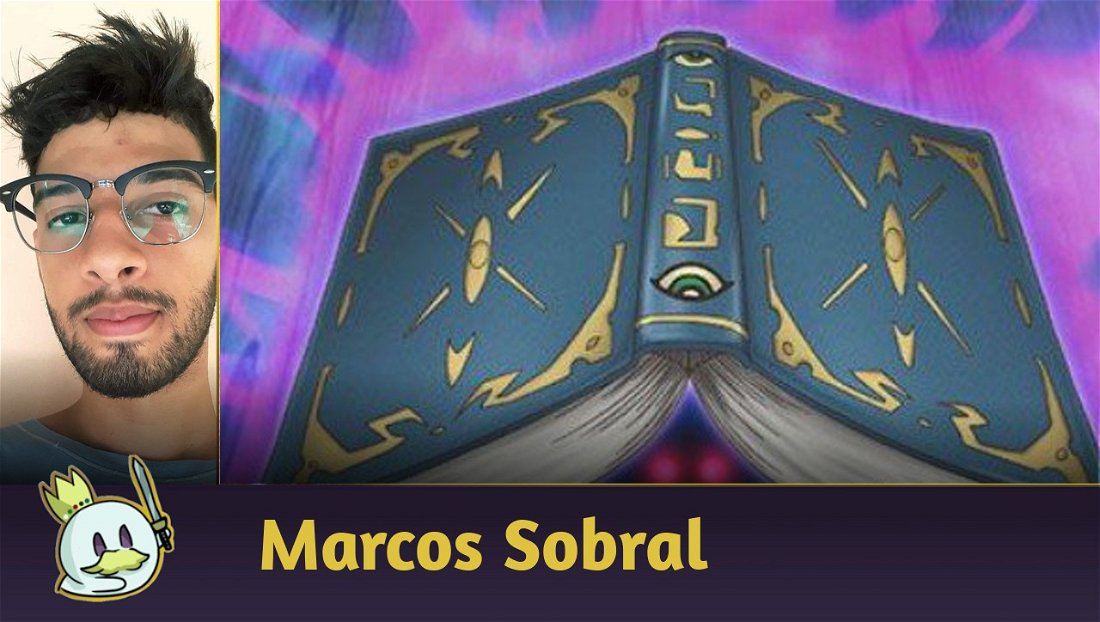Introduction
Currently, Yu-Gi-Oh! TCG's advanced format is open - which means, the best decks' power level ceiling isn't that high, and, besides that, there are many decks that can compete at a high level. To many, this diversity means the format is healthy, once, at least in theory, rogue decks have more chances of winning, which would make the game more democratic.
However, in practice, things aren't that simple. Despite the metagame being balanced, there are still plays which act as a "victory button", capable of ignoring the game's interactivity and providing "unfair interactions".
So, I'll present the 5 unfair interactions I consider harmful to the health of Yu-Gi-Oh! TCG's current format.
Unfair Yu-Gi-Oh! TCG Interactions in September 2023
Hot Red Dragon Archfiend King Calamity's FTK

FTKs are a chronic Yu-Gi-Oh! TCG problem since the beginning of the game, and, as powercreep progressed throughout the years, they have become more refined to keep up with the level of modern decks.
Mid-May this year, FTK this time was played by Superheavy Samurai, but it was soon cancelled with the ban to Cyber-Stein in that same month. Currently, the FTK in question is done by Hot Red Dragon Archfiend King Calamity, but it heavily features Crimson Dragon (card) as well.
To combo, you need to have Crimson Dragon and another 12-level Synchro monster on board. This way, during your opponent's turn, you activate Crimson Dragon's Quick Effect and Synchro-summon Hot Red Dragon Archfiend King Calamity, which activates its effect when it is summoned and, after resolving, prevents your opponent from activating cards for the rest of that turn, practically skipping your opponent's turn, which is fatal in current duels.
Eradicator Epidemic Virus Combo

Eradicator Epidemic Virus is an ancient card and, despite having a high-impact effect, isn't a considerably present card in the metagame as it has a very specific cost. However, with the arrival of Labrynth to the game, Eradicator Epidemic Virus became more relevant in the metagame than ever. That is because, now, there is a deck which can easily reach it through its own engine!
The combo can be made using Arianna the Labrynth Servant and Welcome Labrynth, for instance. To start, normal-summon Arianna the Labrynth Servant and use its effect to add Lady Labrynth of the Silver Castle to your hand. Next, special-summon it through its own effect. Now, get Welcome Labrynth down and end your turn.
During your opponent's draw phase, activate Welcome Labrynth (to summon another Arianna the Labrynth Servant from your deck) and, as an answer, activate Lady Labrynth of the Silver Castle's effect to get Eradicator Epidemic Virus down from your deck to the board. Activate the newly summoned Arianna the Labrynth Servant's effect to add Labrynth Cooclock from your deck to your hand.
After this last effect resolves, activate Labrynth Cooclock discarding it from your hand. Now, you can activate 1 trap card which was played this turn. This way, still in standby phase, activate Eradicator Epidemic Virus's effect tributing Lady Labrynth of the Silver Castle and declaring “Spell” most times (unless you're facing a deck focused on traps or if you want to play around a specific trap card).
This combo is much more effective when you play first and when you know which deck you're facing. However, most times, it will be a determining factor in your victory, because even decks which don't completely depend on spells tend to use this type of card after "side decking" to face a Labrynth.
Droll & Lock Bird at Resolution

This is possible the most controversial interaction on the list, once it divides opinions. Droll & Lock Bird is a high-impact handtrap which is very present in the current format, despite not being useful against Unchained and not being the best interaction to play against Kashtira and Purrely.
As a handtrap, its goal is to prevent your opponent from completing their combo to lower their final board's power level ceiling, and many people defend this card using this argument. As a matter of fact, many agree with the idea that Droll & Lock Bird is only good in "toxic" formats, in which decks add cards to the board at an abusive rate to build oppressive boards. Particularly, I have always agreed with this statement. But I still think it's necessary to analyze the current context of this interaction.
Currently, the 3 main decks in the format can deal with Droll & Lock Bird well, be it by activating its effects during the standby phase, summoning monsters straight from the deck, or doing a single search in the deck during their standard combo. So, the reason why Droll & Lock Bird is so popular are the various tier-2 decks and even rogue decks in the format, which means, the best decks are using Droll & Lock Bird to "oppress" decks that could surprise them, at the same time they aren't affected by it.
Aside from the various archetypes which are completely turned off by Droll & Lock Bird, there are many mechanics which also don't work after getting hit with this interaction, like decks focused on ritual-summon. Another important point to mention is that Droll & Lock Bird has been affecting even card design, considering some recent archetypes have effects designed to work around it, such as, for instance: "You can add to your hand or send to the graveyard 1 card in X archetype".
This way, I believe the "avoiding oppressive boards" reasoning hasn't been true, considering Droll & Lock Bird has been affecting more fragile decks more intensely, whereas tier 1 decks can combo as usual even after getting hit by it.
Knightmare Gryphon Lock

Knightmare Gryphon is another ancient card which became relevant in the current format. Even though this lock was already used by Live Twin Spright Runick variants, this type of play has only become popular now, with the arrival of Unchained to the metagame, and it was thoroughly used by Pak to win his latest big tournament, YCS São Paulo (3x3), which happened on September 2nd and 3rd.
By using a lock that demands monsters who were special-summoned to be linked to activate their effects, you force your opponent to have links in their extra deck, and, besides that, you force them to be able to play one of them on board and keep on comboing, which is something that even Unchained itself (a deck focused on links) struggles to do. Therefore, it is quite hard for most decks to play against this lock, and, most times, it is only possible to go through it when you open up with an out to disable Knightmare Gryphon - otherwise, you'll most likely lose this match when it's your opponent's turn again.
To get Knightmare Gryphon's lock, you need to follow Unchained's standard combo almost word per word, however, instead of setting up a board with Unchained Soul of Rage and D/D/D Wave High King Caesar, you go through with Muckraker From the Underworld and Knightmare Gryphon, besides one of the Unchained traps as well.
Dimension Shifter Present in the Metagame

Just like Droll & Lock Bird, Dimension Shifter is a high-impact handtrap, and stands out because its effect lasts for two turns. However, unlike Droll & Lock Bird, there isn't much debate about a possible "Shifter" ban, as the card was always considered "anti-fun" because it disables the graveyard, which is incredibly relevant for most "modern" Yu-Gi-Oh! TCG decks.
Previously, "Shifter" was only used by decks which were irrelevant for the competitive scene. However, ever since the Tearlaments format, the card became popular as an alternative counter to Tearlaments itself, and, after this deck left the meta, "Shifter" remained in the format, mostly in Kashtira (which dominated the meta in the past few months), but also in decks such as Floowandereeze, Exosister and some Spright variants.
Besides using it to disable decks dependent on the graveyard, it is possible to disable a few handtraps as well, such as Effect Veiler and Droll & Lock Bird, for instance, which need to be sent to the graveyard to be used. So, Dimension Shifter is at the same time a way to disable mechanics and protect yourself against your opponent's interactions, removing interactivity from matchups.
Therefore, I believe Dimension Shifter is extremely harmful to the game's health and needs to be banned/limited in the next banlist!
Final Words
So, what did you think of this list? Do you believe any of these cards will be in the next banlist? Tell me in the comment section.
To get further information about the Yu-Gi-Oh! TCG world, keep browsing our articles. Cards Realm thanks you for your support!














— 评论 0
, 反应 1
成为第一个发表评论的人